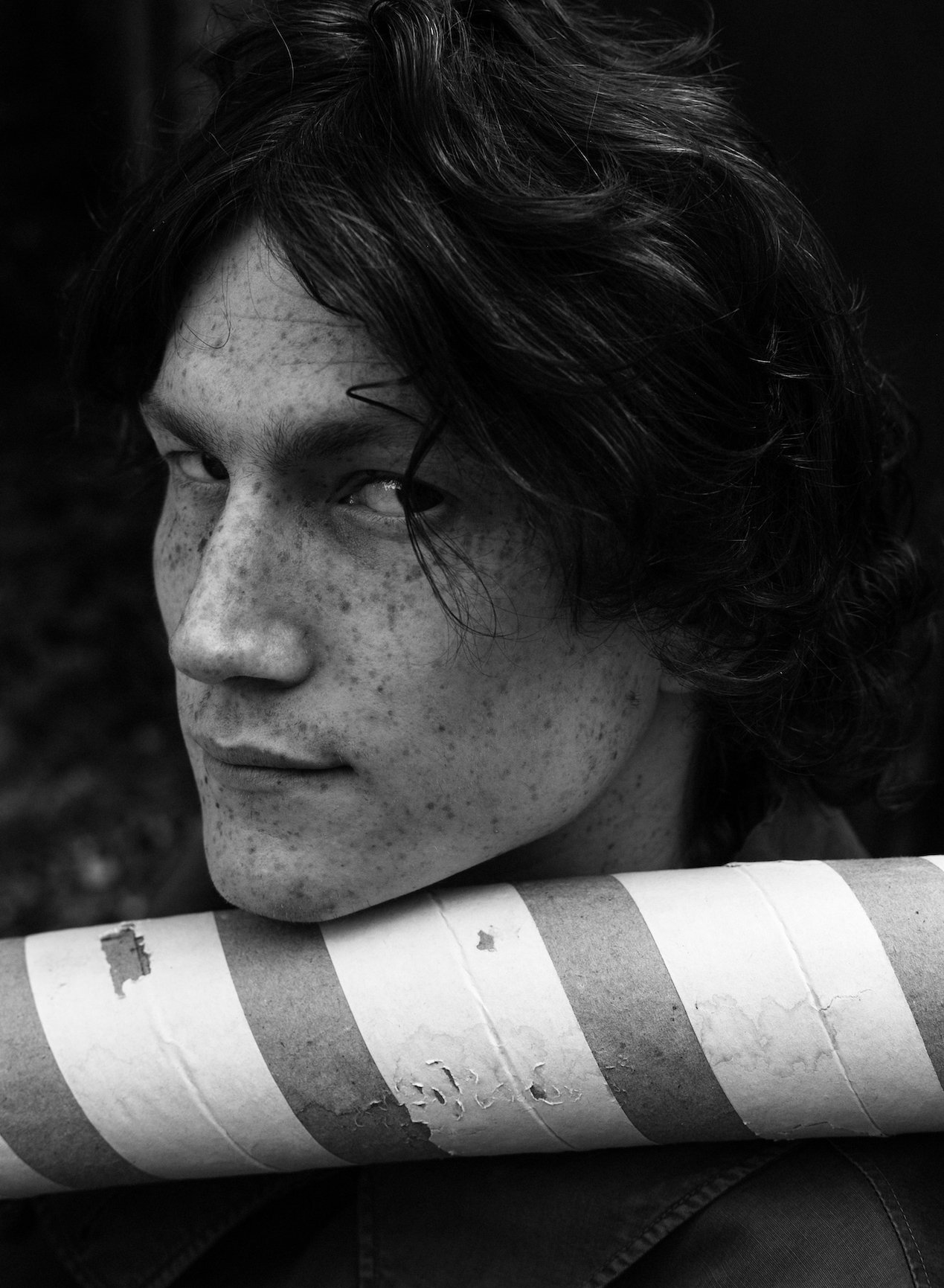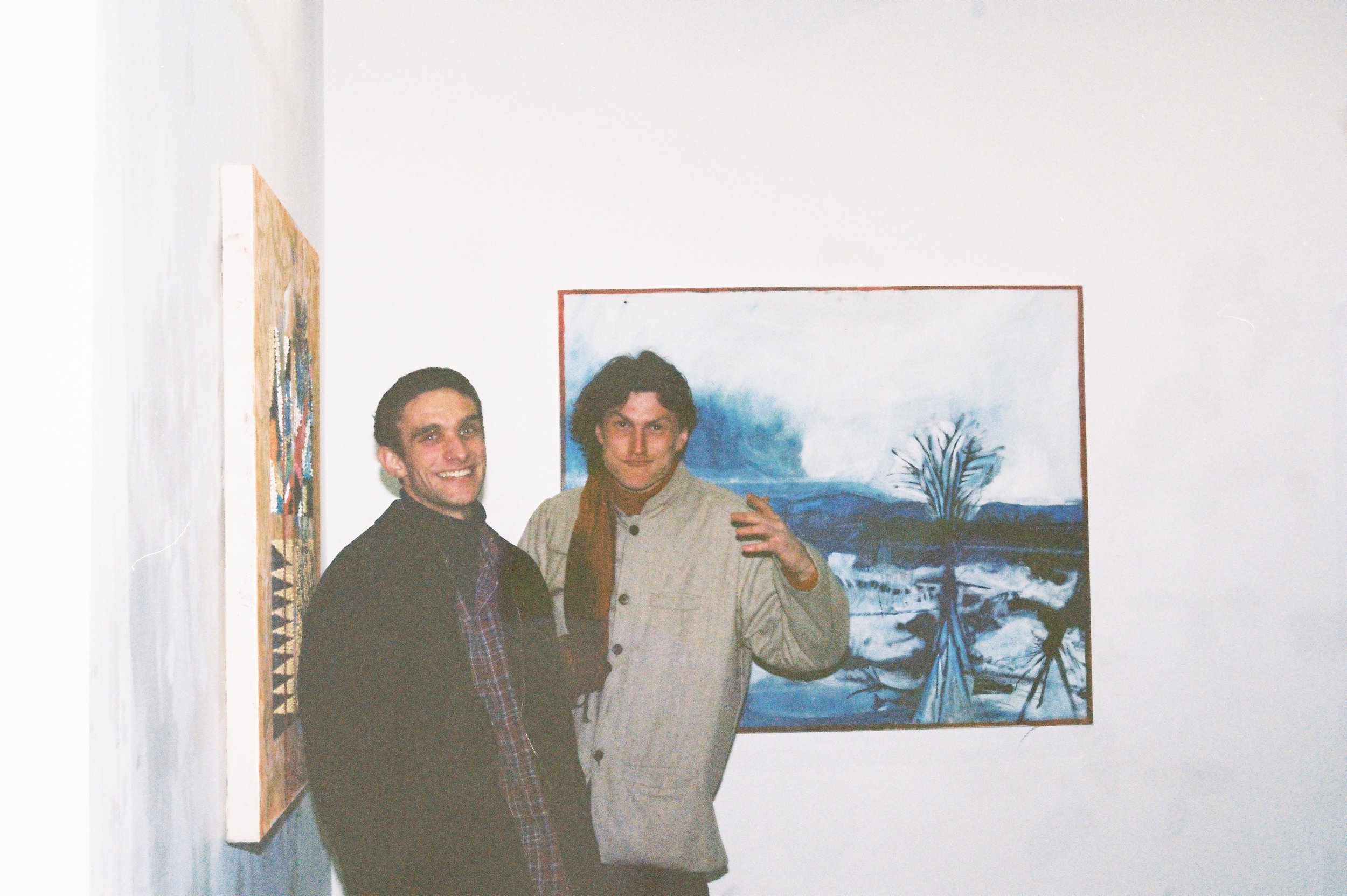Tom Davison
Tom Davison, Photographer: Maria Meco, Photo Courtesy: Tom Davison
Tom Davison received his formal education at the Guildhall School of Music and Drama, where he studied electronic music for his undergraduate degree. His artistic and musical journey began at a young age; he started playing the piano at age seven, the drums at ten, the guitar at fifteen, and began singing at twenty-one. He developed a keen interest in electronic music at nineteen. During his time at Guildhall, he was particularly influenced by a tutor who specialized in sound art. This tutor opened his eyes to the possibilities of sound art, especially the contrast between traditional music formats and sound installations. Unlike an album, which is experienced over time, a sound installation allows the audience to move through space and interact with the sound in a dynamic way. Although he could not fully explore this concept in his recent show due to the limited size of the gallery, creating interactive sound spaces remains one of his future aspirations. Additionally, Davison values the sense of community he finds among fellow musicians and artists, which continually fuels his creative ideas and projects.
Exhibition poster for Monuments, Photographer: Niamh Quigley, Photo Courtesy: Tom Davison
After completing his undergraduate studies at Guildhall, Tom Davison realized he was disenchanted with the music industry and its operations. He gravitated towards sound art, appreciating its community-based nature and the more genial atmosphere of exhibitions. Recently, he collaborated with his longtime friend Jonathon Baddeley who was the guitarist in Davison's secondary school band and later studied painting at Central St. Martins. Davison wasn't ready to undertake a solo white-walled show, so teaming up with Baddeley seemed like the perfect opportunity for mutual support and creativity.
Image of Tom Davison and Jonathon Baddeley, Photographer: Niamh Quigley, Photo Courtesy: Tom Davison
Their joint exhibition involved a dynamic interplay between sound and visual art. Davison and Baddeley engaged in a creative exchange where Davison would send tracks to Baddeley, who would then create paintings in response. Conversely, Baddeley’s paintings inspired new sound pieces from Davison. The exhibition featured a spacious, open gallery with five large paintings accompanied by an hour-long looping soundtrack. The soundscape varied, featuring organs and bagpipes, allowing the audience to respond to the evolving auditory environment.
The technical setup was designed to enhance the immersive experience. Two speakers played the main sound body, complemented by a substantial subwoofer and two sonic actuators placed on drum cymbals. These actuators, essentially speakers without cones, transmitted sound frequencies through the cymbals, creating visual movement and producing unique metallic sounds. The hanging cymbals in the center of the room added a physical dimension to the auditory experience, highlighting Davison's focus on the visual spectacle of sound.
This collaborative exhibition emphasized Davison's passion for working with others and his interest in the immersive qualities of sound, laying the groundwork for his future explorations in sound art. The tracks created for the exhibition are sufficient to form an album, reflecting the depth and scope of his creative endeavour.
Image of Sonic Actuator and Symbol from the Exhibition, Photographer: Niamh Quigley, Photo Courtesy: Tom Davison
Moving forward from his recent exhibition, Davison is focused on making his art sustainable by creating sound installations for museums, which often have the budgets to support such projects. He envisions working on projects similar to the T-rex exhibit at the Natural History Museum, where an artist had to conceptualize not just the roar of the dinosaur but also the ambient sounds that bring the mechanical prehistoric creature to life. Artistically, Davison aims to continue participating in exhibitions, but commercially, he sees sound installations in museums as his pathway into a sustainable career in the industry. This direction allows him to merge his creative aspirations with practical opportunities, ensuring a stable future in sound art.
Tom Davison draws significant inspiration from the minimalist composers of the 50s, 60s, and 70s, such as Terry Riley, Philip Glass, and Eliane Radigue These artists emphasized a meditative state in their work, often pointing towards divinity. Davison resonates with John Cage's quote, "Music should free up the mind thus leaving it susceptible to divine influence," which encapsulates his own artistic aim. He believes that music, at its core, originates from this divine inspiration.
In his recent exhibition, all the sounds were field recordings, a testament to his practice of carrying a microphone everywhere. Every musical and sound component was captured from his travels, representing a collage of his experiences. Despite considering himself a narcissist in everyday life, Davison insists that his music must be egoless, emerging from a place of non-self to achieve a meditative state. This egoless approach allows the art to speak for itself, with Davison merely arranging the pieces.
Davison also draws from the Japanese ambient sounds of the 80s and 90s, known as Kankyo Ongaku, which emphasize environmental music and ambient soundscapes. His goal is to create music that induces a meditative state while being ambient enough to coexist with everyday activities, subtly influencing the listener's subconscious. He aims for his soundscapes to seep into the subconscious, affecting how people perceive Jonathon Baddeley’s paintings in their shared exhibitions. The music complements rather than conflicts with the visual art, creating a harmonious experience.
Looking ahead, Davison envisions exhibitions where speakers are positioned behind or next to the canvases, directing sound towards the viewers. This setup would enhance the viewers' perceptions, changing their experience from one painting to the next in real-time. For instance, intense sounds might draw attention to harsher colors like reds, while softer sounds might highlight calmer aspects of the piece. This approach would encourage viewers to spend more time with the artwork, deepening their understanding and creating a journey through sound and vision.
Image from Private View of Monuments, Photographer: Niamh Quigley , Photo Courtesy: Tom Davison
Artist collecting sound samples, Photographer: Charlie Murchison, Photo Courtesy: Tom Davison
When collecting sounds, Davison prioritizes immersive listening. He ventures into environments with the intent of deeply listening to his surroundings. Inspired by Pauline Oliveros' book "Quantum Listening," Davison views listening as a cyclical process: the more you listen, the more you hear, and this deepened perception continuously enriches the experience. He likens this process to observing a patch of grass—initially, it may appear as just grass, but with prolonged observation, one begins to notice ants, other insects, and eventually, an entire ecosystem bustling with life. This analogy underscores the necessity of learning how to listen and becoming fully immersed in the auditory environment.
For instance, Davison often sits in the woods, attuning himself to the sounds of wind and trees. This focus on natural sounds explains why his exhibition's soundscape contains no human voices. One notable example of his process involved recording a flute player who produced breathy notes. Later, in the woods, he found a symphony in the interplay between the flute's sound and the wind blowing through the trees, complemented by the creaking branches. This connection transformed the wind into a musical narrative, creating an organic cycle of sound.
Davison's field recording sessions can vary in duration; some take half an hour, while others span several days. His goal is to allow the sounds to speak for themselves without overprocessing them with effects or distortions. For instance, he meticulously processed the sound of raindrops on a tent to ensure the frequencies harmonized perfectly with other recordings in the track.
Installing speakers in a gallery space presents another challenge, especially in smaller areas. Davison grapples with practical considerations such as how the speakers will stand or hang and what types of speakers to use. This hands-on application of technical knowledge, despite his theoretical understanding, has been a significant learning curve for him.
Davison's style, often perceived as minimalist, emphasizes presence and meditation. He draws parallels to artists like Rothko, whose use of colour simplicity opens the soul to divine influence. Ultimately, Davison's work is about engaging with the external world and exploring how we react to it, creating a meditative and immersive auditory experience.
To learn more about Tom Davison’s works, connect via Instagram.
Ina Benigni
Emerging Artist Co-Editor, MADE IN BED







